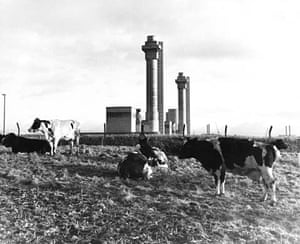Windscale fire (nonfiction)
The Windscale fire of 10 October 1957 was the worst nuclear accident in Great Britain's history, and one of the worst in the world, ranked in severity at level 5 out of a possible 7 on the International Nuclear Event Scale. The fire took place in Unit 1 of the two-pile Windscale facility on the northwest coast of England in Cumberland (now Sellafield, Cumbria). The two graphite-moderated reactors, referred to at the time as "piles", had been built as part of the British post-war atomic bomb project. Windscale Pile No. 1 was operational in October 1950 followed by Pile No. 2 in June 1951.
The fire burned for three days and released radioactive fallout which spread across the UK and the rest of Europe. The radioactive isotope iodine-131, which may lead to cancer of the thyroid, was particularly concerning at the time. It has since come to light that small but significant amounts of the highly dangerous radioactive isotope polonium-210 were also released. It is estimated that the radiation leak may have caused 240 additional cancer cases, with 100 to 240 of these being fatal. At the time of the incident no one was evacuated from the surrounding area, but milk from about 500 square kilometers (190 sq mi) of nearby countryside was diluted and destroyed for about a month due to concerns about its exposure to radiation. The UK government played down the events at the time and reports on the fire were subject to heavy censorship, as Prime Minister Harold Macmillan feared the incident would harm British-American nuclear relations.
The event was not an isolated incident; there had been a series of radioactive discharges from the piles in the years leading up to the accident. In the Spring of 1957, only months before the fire, there was a leak of radioactive material in which dangerous strontium-90 isotopes were released into the environment. Like the later fire, this incident was also covered up by the British government. Later studies on the release of radioactive material as a result of the Windscale fire revealed that much of the contamination had resulted from such radiation leaks before the fire.
A 2010 study of workers involved in the cleanup of the accident found no significant long term health effects from their involvement.
